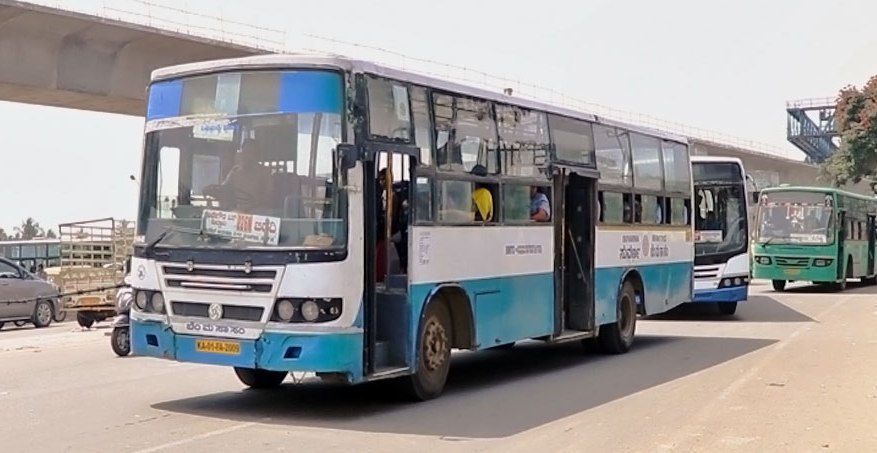Women passengers are unsure about their safety in public transports.
Bengaluru, Oct. 23, 2018: Of the 6,627 Bengaluru Metropolitan Transport Corporation (BMTC) buses in Bengaluru, only 150 buses are equipped with panic alarm buttons, as told by Meenakshi Giridhar, an employee of Bengaluru-based NGO, Durga. The BMTC application has not been upgraded with the two prominent features including SOS alerts and Passenger Tracking System. Most of the women passengers in the city say, “We don’t know where the panic buttons are placed in the buses and what their main purpose is.”
Rashika R., a resident of Jayanagar said, “I travel every day from home to my place of work, and I’ve hardly come across with a BMTC bus having panic buttons.”
The Centre granted Rs. 56.50 crore to the Karnataka government under the Nirbhaya Fund in order to ensure women’s safety in public transport and to upgrade its application with (SOS alerts) panic button and Passenger Tracking System (GPS), as told by Main plan and Statistician officer at BMTC.
There was an announcement made by Digital Transport Info Exchange, about the mandatory installation of panic buttons and GPS tracking in all public transport including buses by April 1, 2018. The role of the panic button is to send emergency alert to the police, family and BMTC’s control room. The family can also stay in touch with the passenger’s travel details with the Bluetooth-based Passenger Tracking System.
“I tried pressing a panic button in the BMTC bus to check, but it did not work,” said teacher, Srikanth, who takes the local bus every day to commute to his school in Vasanth Nagar.
Priya Vardharajan, CEO of an NGO- Durga India, who in association with the BMTC, first installed panic buttons in 50 buses said, “Panic buttons are not in a workable condition because there is no proper inspection from the government. The placement of panic buttons is also not done in a planned manner, which is making the initiative a failure. The government should have taken relevant steps to promote the awareness about the use of panic buttons in the buses.”
Chandresh Iyer, a passenger travelling to Mysore road in a local bus asserted the wires of the panic buttons were seen coming out; they were not in a workable condition. In addition to that, he said, “Lack of maintenance in the buses leads to the failure of important initiatives in the city.”
Abhijeet Kundu, a sociologist at Delhi University said, “We can’t avoid technological advancement as well as technological surveillance in today’s time. Possibly, panic button is a signifier of the helplessness and surrender of human species. People are becoming more aware about the importance of safety measures in the public transport after the December 2016, Nirbhaya Gang Rape case, where a woman was allegedly raped in a moving bus and was thrown out on the road. Thus, to ensure women’s safety, there’s an urgent need for such initiatives in all the states, however to make them a success, a more responsible use and maintenance is called for. Awareness drive could also be another solution.”
In addition to that, Priya Vardharajan said, “Durga is trying its best to spread the awareness about the panic buttons in the buses. We plan to take buses in the crowded places and demonstrate the use of panic buttons.” She believes, “if a woman can’t raise her voice, she can raise her finger.”




